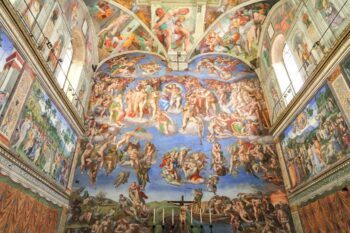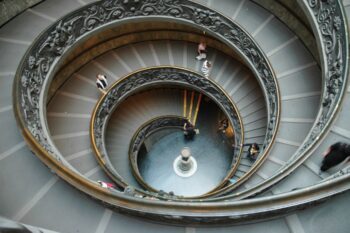Our Vatican Guide
Information on admission, tickets and our tips
Latest update: March 7, 2024
In a nutshell: Our tips for your visit to the Vatican
- The Vatican is an absolute must-see among the sights in Rome.
- Admission to the Vatican is free. To enter the dome of St. Peter’s Basilica, the Vatican Museums & Gardens and the Papal Palace in Castel Gandolfo you have to pay an entrance fee.
- If you go on a guided tour, you won’t have to wait in line to enter any of the Vatican highlights.
- Begin your visit to the Vatican at the impressive east entrance, which you can easily reach from the city center.
Do you want to be perfectly prepared for your visit to the Vatican? Then have a look below.
In our article we will give you all the information you need about Vatican entrance fees and sights you shouldn’t miss in the smallest state in the world.
Prices and tickets for visiting Vatican City
You can simply walk into Vatican City as if it’s any other part of Rome. The entrance is free of charge.
You only have to pay admission for the following Vatican sights:
- Dome of St. Peter’s Basilica
- Vatican Museums & Gardens
- Papal Palace of Castel Gandolfo
A Rome city pass might also be a good option for you. Some of the city passes include free admission to selected highlights of Vatican City. In our pass comparison you find our more about the best city passes for Rome.
All Vatican sights and their admission fees are listed here:
| Admission | Tickets | |
|---|---|---|
| St. Peter's Basilica | free | - |
| St. Peter's Dome | 8-10 euros | on site only |
| Vatican Museums | 26 euros | Tickets |
| Vatican Museums + Gardens of Vatican City | 75 euros | Tickets |
| Apostolic Palace | 22 euros | Tickets |
Attractions of Vatican City on a map
To give you an overview of the Vatican and the location of its highlights, we’ve created a tourist map of Vatican City for you.
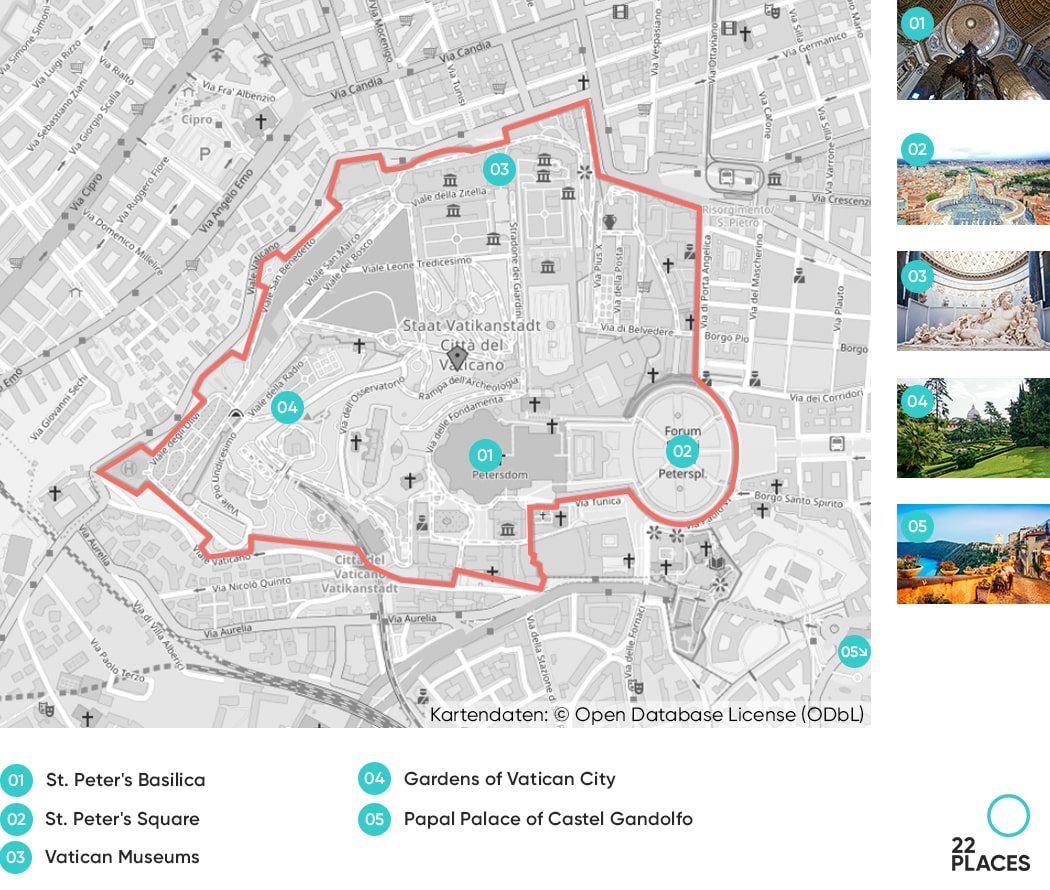
St. Peter's Basilica
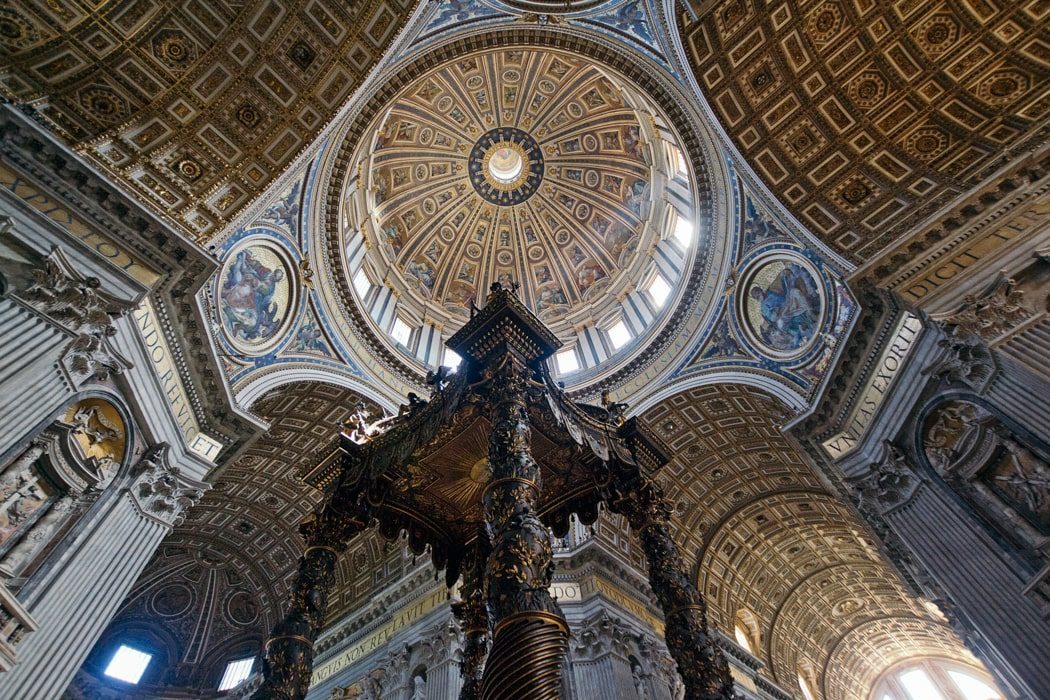
St. Peter’s Basilica is huge. It can fit up to 20,000 people, making it one of the largest churches in the world. The dome on top of the basilica was designed by Michelangelo and has a diameter of 42 meters.
The inside is also simply gigantic, full of gilded stucco, colorful mosaics, statues and marble reliefs. Here you can also find the famous sculpture “Roman Pietà” by Michelangelo. You can see similar stunning interior in the St. Mark’s Basilica, one of the most beautiful attractions in Venice.
Beneath St. Peter’s Basilica are the Vatican Grottoes, where more than 90 popes are buried. The grottoes are freely accessible.
The entrance to St. Peter’s Basilica is free. However, due to security checks, there is always a queue.
Dome of St. Peter's
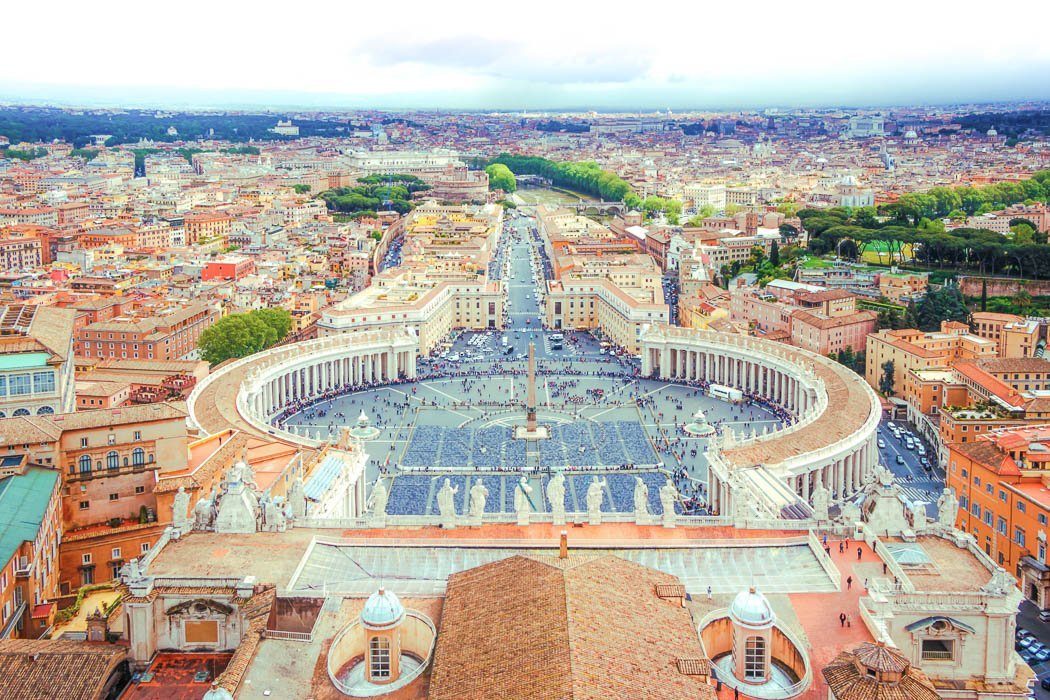
The cantilevered dome of St. Peter’s Basilica is considered the largest brick structure in the world. At a height of 117 meters, there is a large observation deck from which you can enjoy a wonderful 360-degree view of all of Rome and Vatican City.
You can reach the dome either via a staircase with 551 steps, or by elevator. However, the elevator doesn’t save you from all the walking, because at the exit of the elevator there are still more than 300 steps to climb. The dome is therefore not barrier-free.
The dome of St. Peter’s Basilica has a separate entrance. If you are standing in St. Peter’s Square and facing St. Peter’s Basilica, it is in the portico on your right.
The queue can be quite long here as well, and unfortunately you can’t buy tickets for the dome in advance. The only way to get in faster is to take a guided tour.
To the tour of St. Peter’s Basilica with ascent of the dome
St. Peter's Square
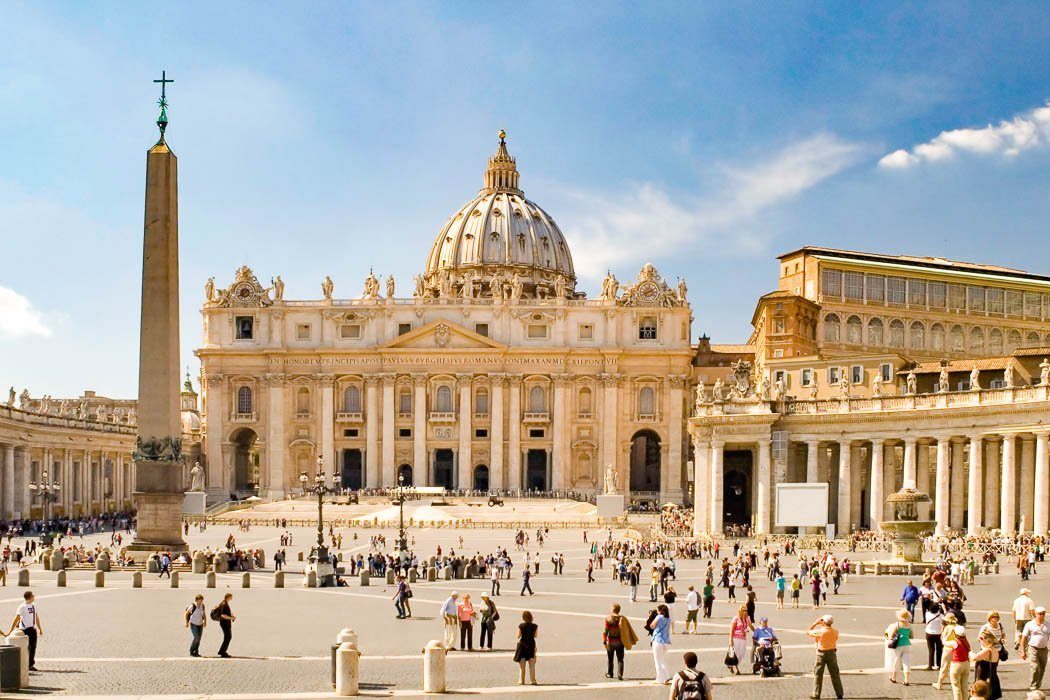
St. Peter’s Square at the Vatican is impossible to miss and if you come through the east entrance, the square is the first highlight you see of the Vatican.
The square itself is huge and can hold over 100,000 people. St. Peter’s Basilica stands directly in the square. It is surrounded by two wide colonnades which form the state border with Italy.
In the middle of the square is a 25 meter high obelisk, which was brought to Rome from Egypt in ancient times.
St. Peter’s Square is always crowded, but on Wednesday mornings it is even busier than usual because that is when the Pope holds general audience. There are four huge screens in the square where visitors can watch the audience.
Attendance at the general audience is free, but you must register up to 10 days in advance.
Vatican Museums
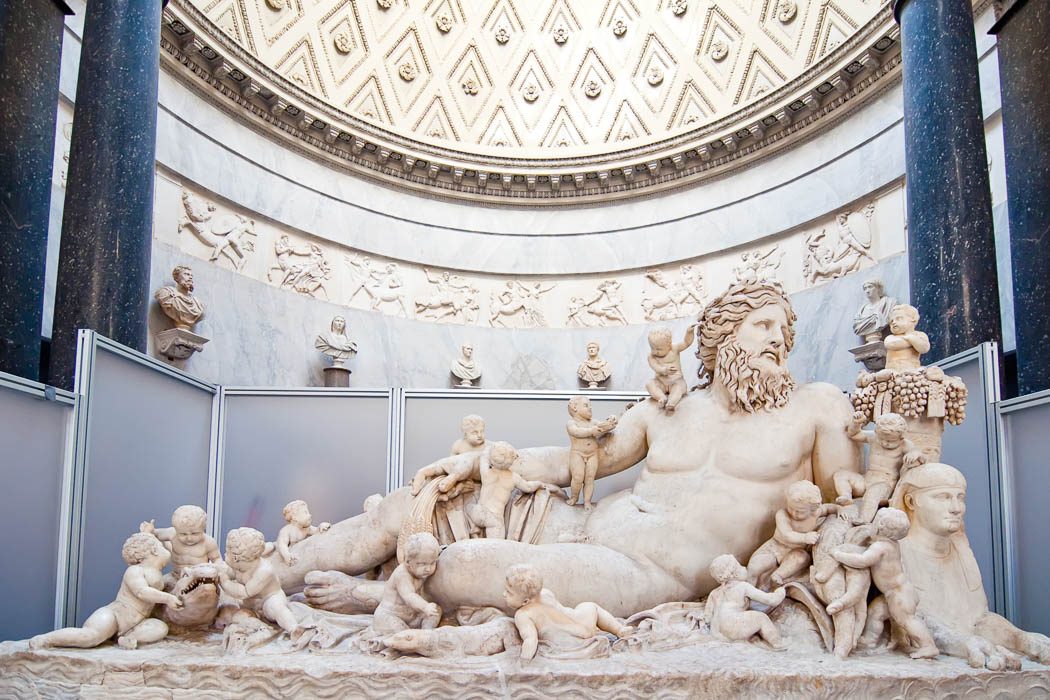
The Vatican Museums are among the most important and largest museums in the world.
On display are works of art from all eras and continents: From ancient times to the Middle Ages to the 19th century, on over 55,000 square meters and 1,400 rooms.
Also included is the Sistine Chapel, located at the very end of the museums.
You should plan at least 3 hours for the visit of the Vatican Museums.
If you are traveling with kids in Rome, you can also book a special tour for families.
The admission fee on site is 21 euros per person. The queue to the museums can be very long, so it’s worth booking your ticket online in advance. This will give you priority access. It costs 5 euros more, but it’s definitely worth it.
To the skip-the-line-ticket for the Vatican Museums
Our insider tip: You can combine your visit to the Vatican Museums with a visit to St. Peter’s Basilica, as there is direct access to St. Peter’s Basilica from the Sistine Chapel. This is only for guided groups, but you can simply join a guided tour unnoticed and sneak into St. Peter’s Basilica. To do this, you have to go right, not left, at the exit from the Sistine Chapel. However, you will then miss the extraordinary spiral staircase.
Note: The entrance to the Vatican Museums is in the Piazza del Risorgimento, outside the Vatican. You cannot enter the museums from St. Peter’s Square.
Gardens of Vatican City
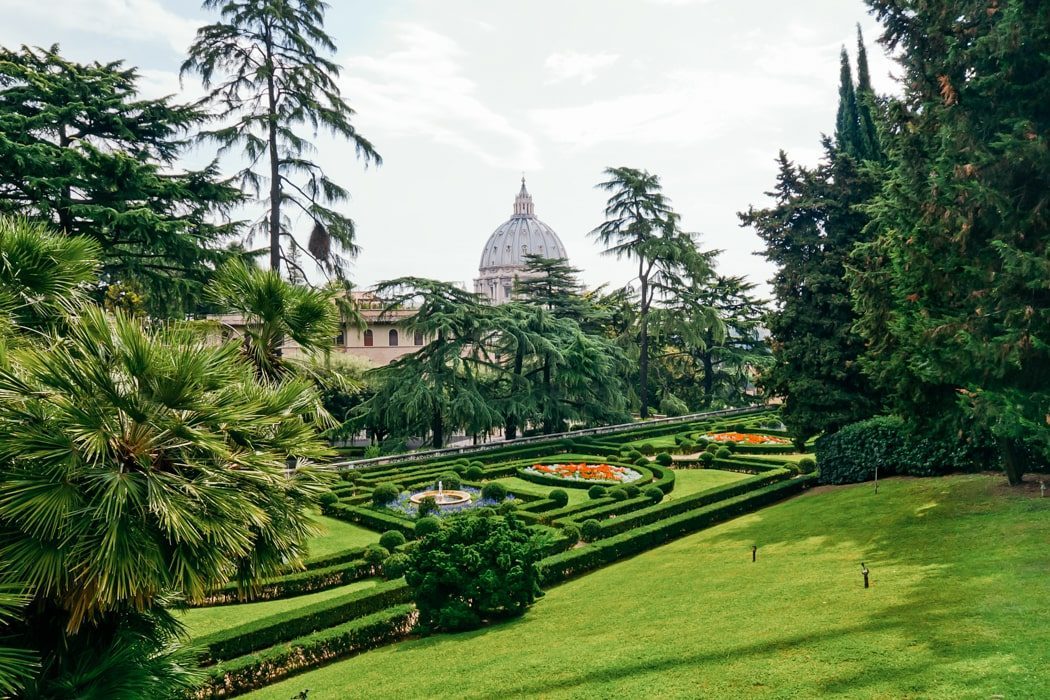
The Vatican Gardens are located behind the Vatican Museums and St. Peter’s Basilica. Because of its 23 hectares, the gardens make up a large part of Vatican City.
The gardens are in Italian, English and French styles and consist of flower beds, orchards, meadows and a forest. There is a labyrinth, fountains, sculptures and grottoes, as well as Renaissance and Baroque monuments.
So it’s an absolute paradise for those looking for some peace and relaxation. However, you can visit the gardens only as part of a guided tour, combined with a visit of the museums.
Bus tour of the Vatican Gardens & Vatican Museums
Walking tour of the Vatican Gardens & Vatican Museums
Papal Palace of Castel Gandolfo
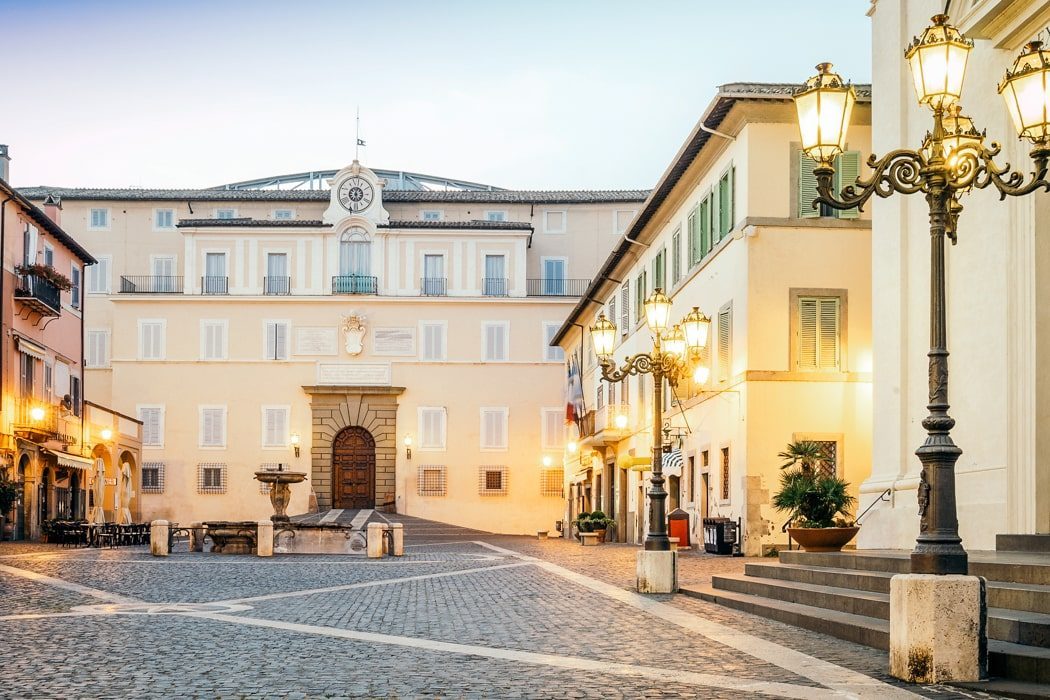
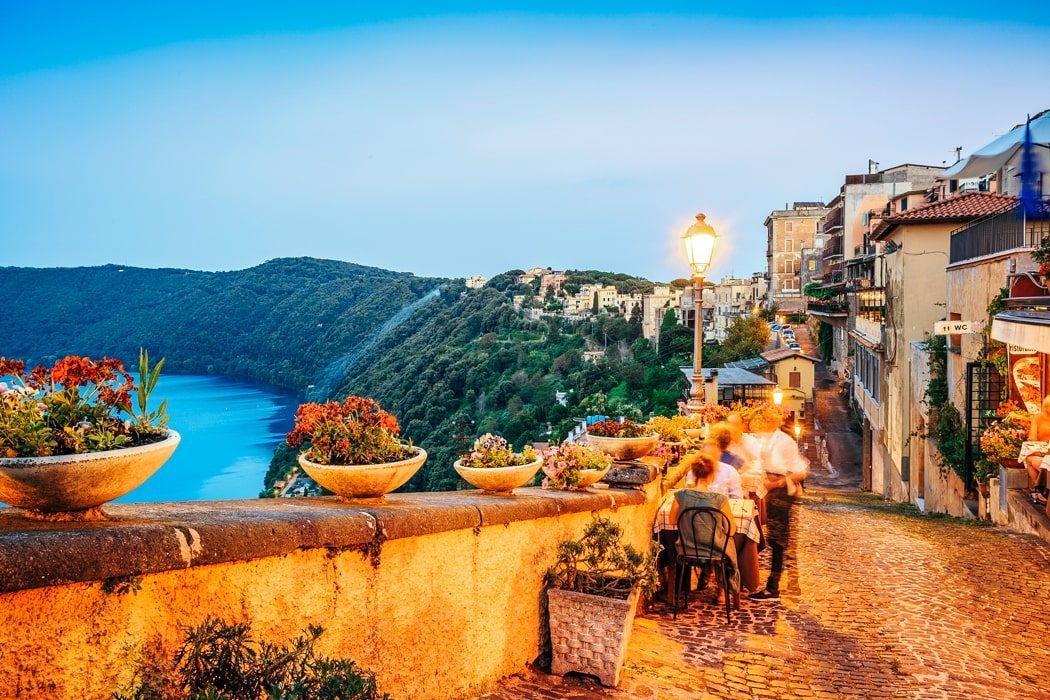
The Papal Palace is located 20 kilometers outside of Rome, in the mountain village of Castel Gandolfo, at about 400 meters above sea level.
From the village you have a fantastic view of the countryside and Lake Albano.
The Apostolic Palace was the traditional summer residence of the popes until 2016, when Pope Francis renounced it and opened it to visitors.
In the palace you can see personal belongings of the popes, the bedroom, a portrait gallery and religious artifacts. The tour also includes the Barberini Gardens, overlooking Lake Albano.
To the ticket for the Papal Palace in Castel Gandolfo
Tips for visiting Vatican City
In order for you to be best prepared for your visit to the Vatican, here is some important information.
Dress code at the Vatican
The Vatican has a strict dress code. You can walk in the streets or in St. Peter’s Square dressed normally, but inside St. Peter’s Basilica and on the dome your shoulders and knees must be covered.
During the summer, for example, you can simply take a light scarf to cover your shoulders when entering the religious buildings.
There are no restrictions for the Vatican Museums, but there are for the Sistine Chapel, which is located inside the museums.
Therefore, it is recommended to avoid shorts or short skirts here as well. Otherwise you will be denied access to the chapel.
Best days of the week to visit Vatican City
If you are flexible, you should avoid Wednesdays, Saturdays and Sundays.
Weekends are always particularly busy because, in addition to the already numerous tourists, many Italians come to Vatican City for a day too. Moreover, the Vatican Museums are closed on Sundays.
On Wednesdays, the General Audience takes place at 9:30 am, with tens of thousands of pilgrims regularly attending. St. Peter’s Square is then filled with thousands of seats and you can only move around the edges of the square.
A good day is Monday, when many tourists have just left.
The best time to visit Vatican City
Vatican City is never deserted, no matter what time of day it is. It gets crowded early in the morning, as many tour operators start their tours as early as 8:00 or 9:00 o’clock.
The best time for a visit is in the late afternoon, when the tourists slowly head back to their hotels.
The same goes for St. Peter’s Basilica and the dome. The best time is late afternoon, when the tour groups have already finished their tours.
The Vatican Museums are equally busy. Many visitors arrive in the morning and are out to eat by lunchtime.
So weekdays between 1:00 and 3:00 pm is a good time to visit the museums with a little more quiet.
Book a guided Vatican tour
Taking a guided tour means you don’t have to wait in line and you can get into all the Vatican highlights in no time.
In addition, a Vatican guide also knows the hidden sights that you would otherwise most likely walk past.
We can recommend the following Vatican tours:
Tour of the Vatican Museums, Sistine Chapel, St. Peter’s Basilica & Dome
Tour of the Vatican Museums, Sistine Chapel & St. Peter’s Basilica, without dome
Tour of St. Peter’s Square and St. Peter’s Basilica
Are you interested in a guided tour of Rome? We show you 11 special tours for first-timers and real Rome connoisseurs.
11 Special Guided Tours in Rome
Eating and Drinking in the Vatican
There are no real restaurants within Vatican City limits, except for the cafeterias and a few snack machines inside the museums and the dome.
There is a supermarket, but only Vatican employees are allowed to shop there. If you want to have a real lunch, you’d better get out of the Vatican again and eat in a Roman trattoria outside the border.
Our tip: Bring a water bottle, especially if you visit the Vatican in the summer. The lines can be long and there are no street vendors in St. Peter’s Square.
Beware of pickpockets
Vatican City has the highest crime rate in the world.
That sounds a bit harsh, but it’s simply because crime is measured in relation to the number of inhabitants. And Vatican City only has about 850 inhabitants.
The crimes are mainly pickpocketing, which happens very frequently.
The most popular places for pickpockets are those where most people gather, that is, St. Peter’s Square and in front of the statue “Pietà” by Michelangelo, in St. Peter’s Basilica.
So take care of your wallet and camera!
How to get to Vatican City
The Vatican has several entrances, but only two are for tourists: the north entrance and the east entrance.
Vatican east entrance
The east entrance is much more impressive and leads directly to St. Peter’s Square and St. Peter’s Basilica via the magnificent Via della Conciliazione.
You can easily reach it on foot from the center of Rome.
Getting to the east entrance of Vatican City by public transport
The closest metro station is Ottaviano on line A, but it is about a 15 minute walk to the east entrance.
Alternatively, there are many city buses that take you to the area of the east entrance.
Bus lines 64 and 40 go directly from Termini Central Station right near Vatican City. Line 64 stops at Ospedale Generale Santo Spirito, while line 40 stops in Piazza Pia. Both are about 10 minutes from the east entrance on foot.
Vatican north entrance
The north entrance is worth it if you want to visit the Vatican Museums first and then the rest of Vatican City.
By bus & train to the north entrance of Vatican City
The closest metro station is Cipro, also on line A. It takes about 10 minutes from there to the north entrance and the entrance to the Vatican Museums.
Bus line 81 goes from the Colosseum or Piazza Venezia directly to the north entrance. The bus stop is in Piazza Risorgimento.
Getting to Vatican City by shuttle bus from Fiumicino Airport
If you’re staying at a hotel in Rome right near the Vatican and you land at Fiumicino Airport, it is worth taking a shuttle bus from the airport. It stops in Via Crescenzio, about 10 minutes walk from St. Peter’s Square.
The bus leaves every 30 to 40 minutes from terminal 3. The ticket costs 6 euros per person.
To the shuttle bus from Fiumicino airport to the Vatican
Unfortunately, there is no direct connection from Ciampino Airport to the Vatican. You would have to take a shuttle bus to Termini Station and from there take the subway or the city bus.
10 interesting facts about Vatican City
The Vatican is so special not only because of its cultural highlights, but also because of its history and political status.
To wrap up, here are 10 exciting facts about the Vatican that not everybody knows:
- The Vatican is the smallest state of the world, with a population of about 850 and an area of less than half a square kilometer.
- The Vatican is not part of the EU. Nevertheless, the Vatican is allowed to use euros and mints its own coins.
- At the ATM in the Vatican, you can choose Latin in addition to the usual languages like English, Italian, and German.
- If you live in Vatican City, you pay no income tax and no sales tax. So food is about 22% cheaper than in Italy. Electricity and telephone are also free and rent is only 4% of your income. Unfortunately, you can only live and shop in Vatican City as an employee of the Vatican.
- The Vatican has its own postal administration and prints its own stamps. The Vatican postal service is said to work much better than the Italian postal service.
- The Vatican is the only state in the world whose entire territory is a UNESCO World Heritage Site.
- According to legend, the bronze urn on the obelisk in St. Peter’s Square contains the ashes of Julius Caesar.
- The Vatican has a magnificent but little-used train station. From here, the train leaves once a week for the papal palace in Castel Gandolfo.
- The Swiss Guard, the papal military, numbers 135 men. To be a guardsman, you must be male, Catholic, from Switzerland, have military training and a high school diploma, be single and between 19 and 30 years old.
- The Vatican has the highest wine consumption in the world: a whopping 54 liters a year per capita.
These were our tips for visiting Vatican City!
A visit to the Vatican is one of the absolute must-sees in Rome. Do you have any questions about the Vatican or Vatican tickets? Then feel free to leave us a comment.

